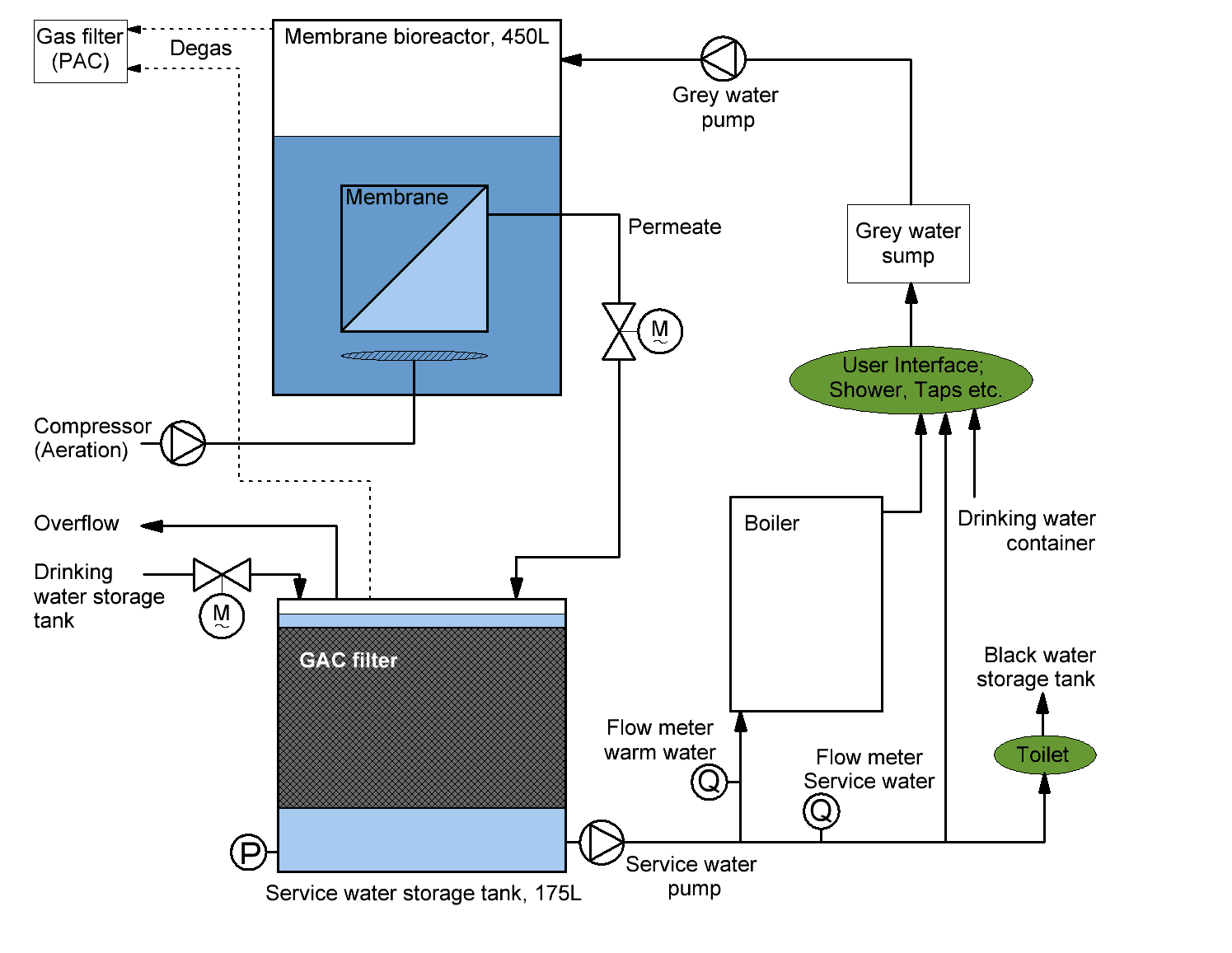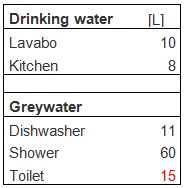
WATER

DRINKING W.

RECYCLING

BLACK WATER

FILTRATION
Grey water recycling
As the rainwater storage on the rooftop only covers drinking water usage, grey water treatment and recycling is implemented, as shown in Fig.3. Including shower, dishwashing and toilet flushing a total water use for 2 persons is calaculated to be about 105 L/d (including 18 L drinking water) (see Table 1). As black water (from toilet flushing, 15 L) is collected in a separate black water container, the grey water treatment has to be able to cope with about 90 L/d.

Grey water treatment is kept as simple as possible to be as energy and maintenance efficient as possible. Grey water is treated with a membrane bioreactor (MBR) with a microfiltration membrane. Similar to the drinking water treatment, a gravity driven membrane filtration was chosen to avoid energy loss due to permeate pumping. The MBR is initially inoculated with conventional activated sludge of a waste water treatment plant and then on first hand fed with synthetic grey water.
The MBR has a fine bubble aeration which is operated intermittently and load proportional (production of greywater). With this treatment COD and nitrogen removal should be achieved. Furthermore, due to the membrane also particles and microorganisms are retained.
The biologically and mechanically treated grey water is then stored in the treated grey water eg. service water tank. This water is expected to still contain a certain amount of organic compounds (substrates) and an elevated temperature, and therefore regrowth needs to be considered. Here the use of a UV lamp is not so promising as in drinking water as the available substrate concentration and turbidity is much higher and the UV lamp should be on more often than in drinking water to achieve a good quality and thus the energy consumption would be too high. Therefore, a GAC (granulated activated Carbon) filter is installed in the service water tank. With this filter not only substrates but also odour and colour compounds can be removed in order to achieve a high bathing water quality, providing a secure living (showering) in self unit. It is expected that the GAC filter will remove further substrates by biological ativity (biofilm), resulting in far-going substrate consumption, so that pathogens are not able to grow in. This is especially relevant for fast growing organisms such as Pseudomonas aeruginosa and it is expected that bathing water quality can be achieved. This strategy will be tested soon with synthetic grey water and if successful it has to be guaranteed under real use conditions.

